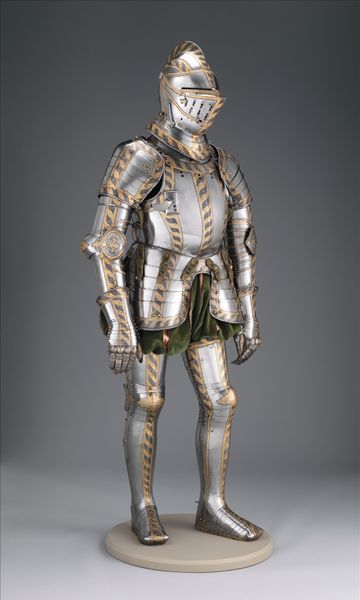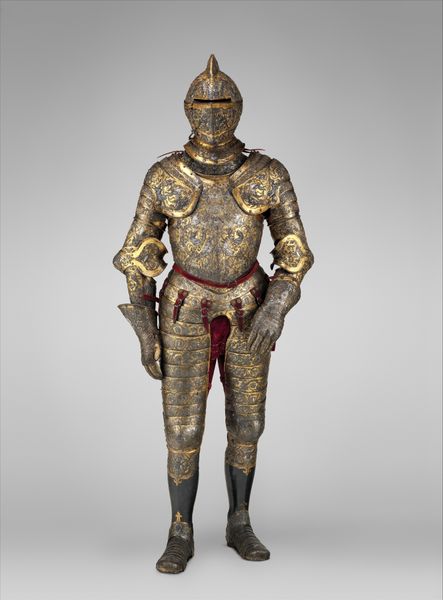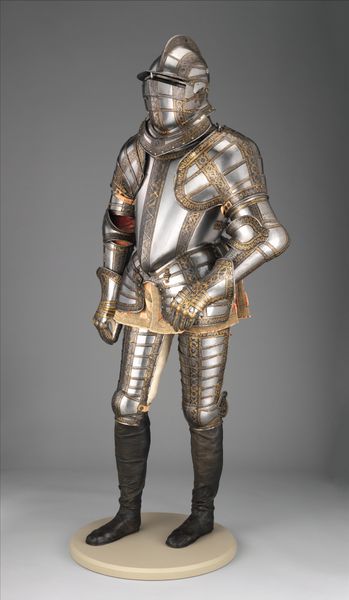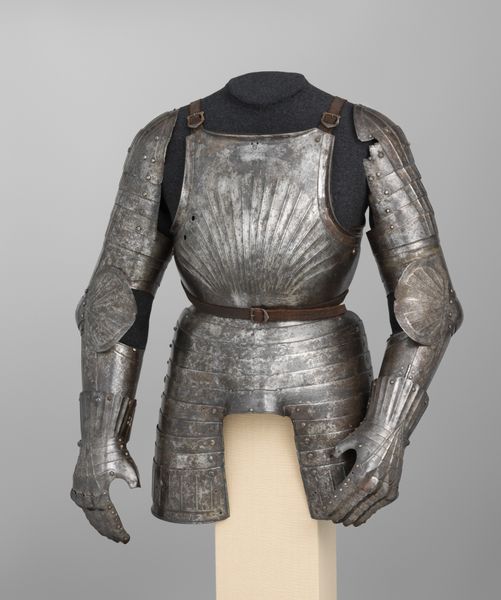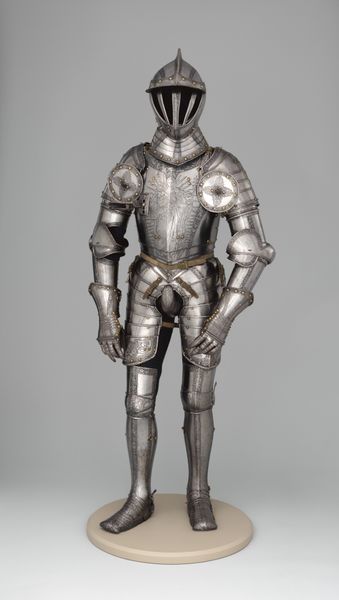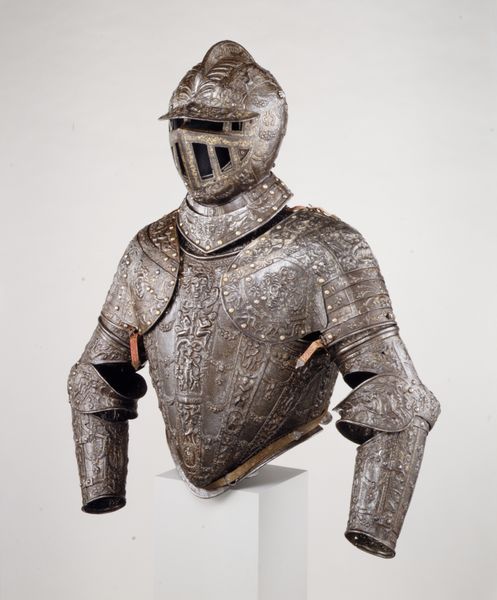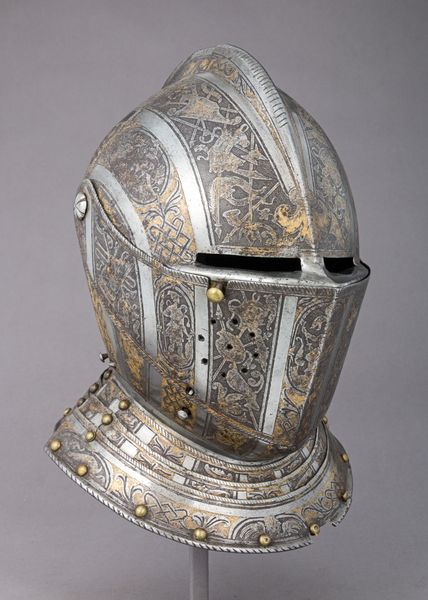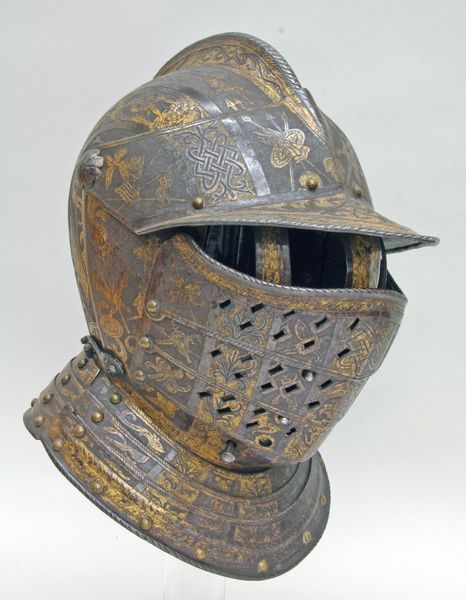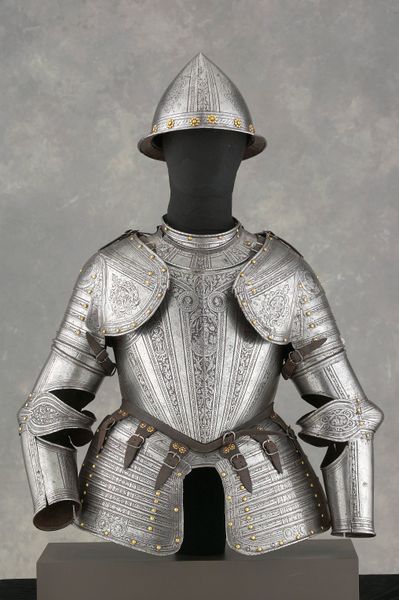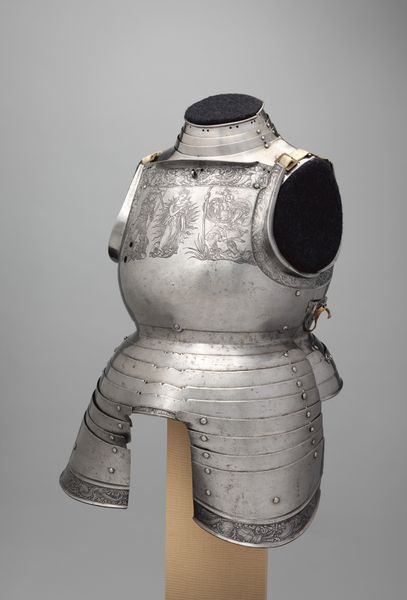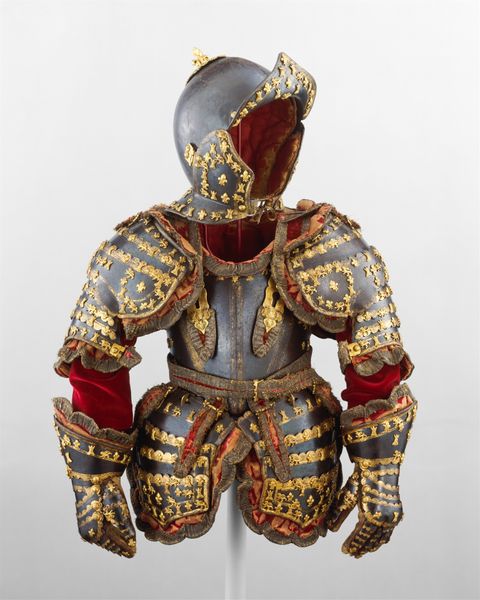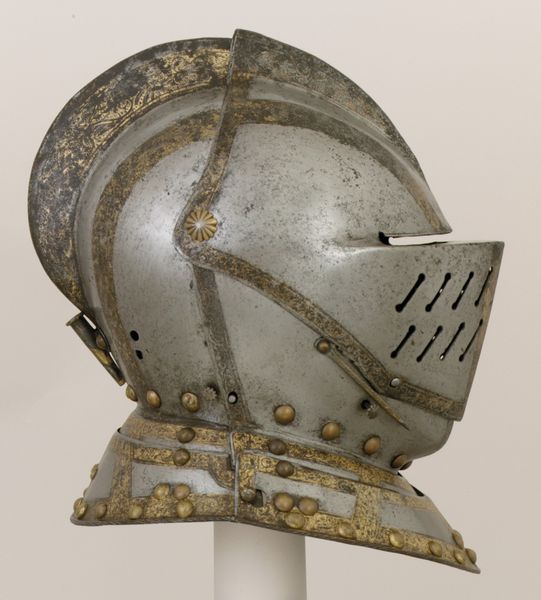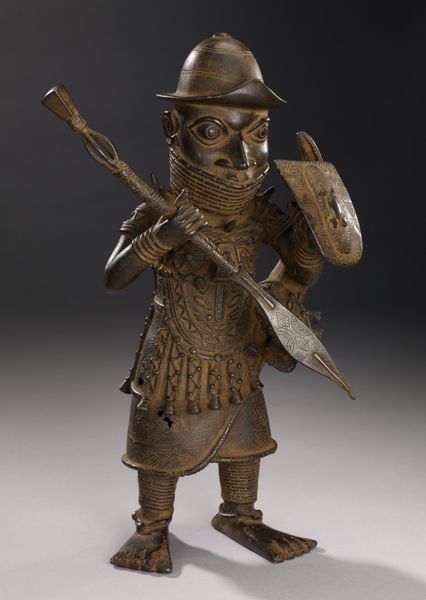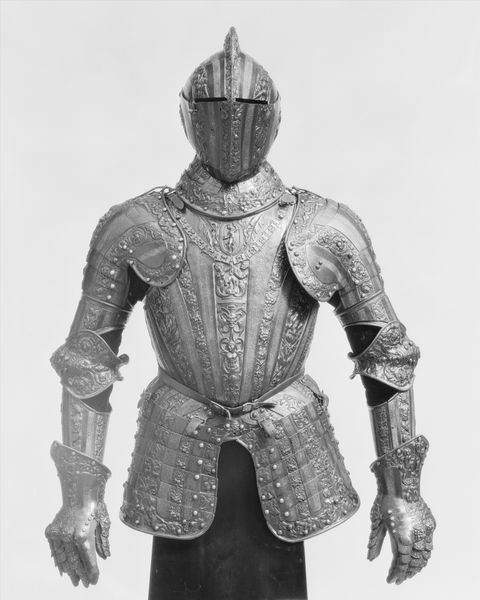
Foot-Combat Armor of Prince-Elector Christian I of Saxony (reigned 1586–91) 1591
0:00
0:00
carving, metal
#
carving
#
metal
#
11_renaissance
#
armor
#
northern-renaissance
#
decorative-art
#
arm
Dimensions: H. 38 11/16 in. (98.2 cm); Wt. 46 lb. 3 oz. (20.96 kg); helmet Wt. 11 lb. 9 oz. (5245 g)
Copyright: Public Domain
Editor: Right, so next up we have this incredible piece, the "Foot-Combat Armor of Prince-Elector Christian I of Saxony," made in 1591. Look at that intricate gold inlay on blackened steel! It’s so ornate and clearly symbolic of status, but also it appears to be functional! How should we think about a piece like this? Curator: That's the tension, isn't it? We see armor primarily through the lens of protection, of military prowess, and thus, masculinity. But something like this… what statements is Prince Christian trying to make about his rule, about Saxony itself? Who has access to imagery like this? Editor: So you’re suggesting the artistry itself is part of the political statement? How so? Curator: Exactly. Consider where this was displayed, who would have seen it. The incredibly detailed carving, the expensive materials – these communicate power and wealth, divine favor even, within the visual vocabulary of the late Renaissance. It projects a carefully constructed image of Christian as a divinely appointed ruler. Do you notice how this armor differs from others we've looked at in the gallery? Editor: Now that you mention it, this armor seems less about being on the battlefield. More about pageantry, the symbolic battlefield of the court? Curator: Precisely! Think of courtly rituals, the tournaments. This armor becomes performative, a piece of carefully constructed propaganda. The visual impact supersedes practical military concerns. We need to unpack who gets to produce and consume this image of power. It solidifies hierarchies. Editor: I hadn't considered how an object seemingly about war is really a statement about peace – or rather, control. Curator: And about how controlling appearances becomes key to controlling perception. Considering the role and the public role of such pieces shapes how we see visual imagery, right? Editor: Absolutely. I’ll definitely think about armor differently from now on. Thanks.
Comments
No comments
Be the first to comment and join the conversation on the ultimate creative platform.
